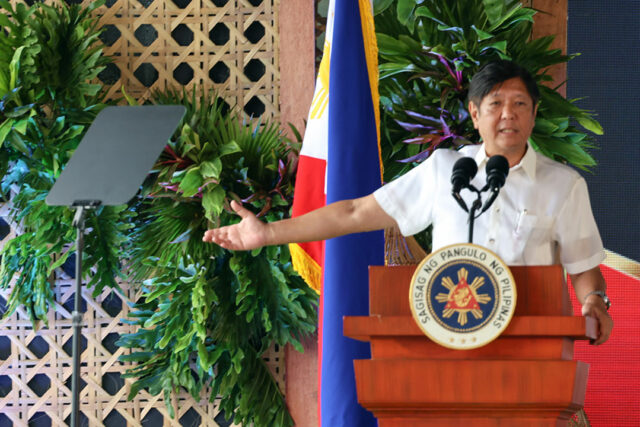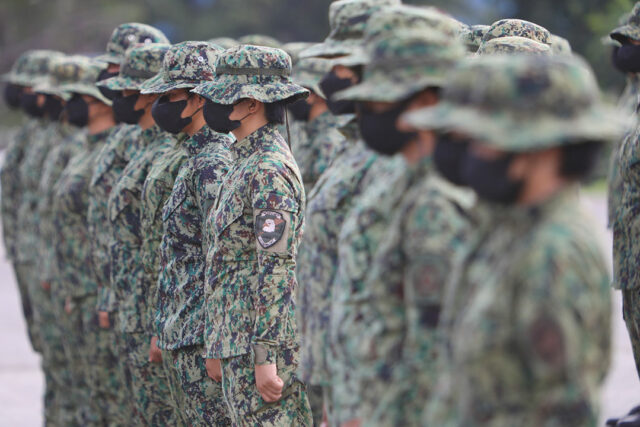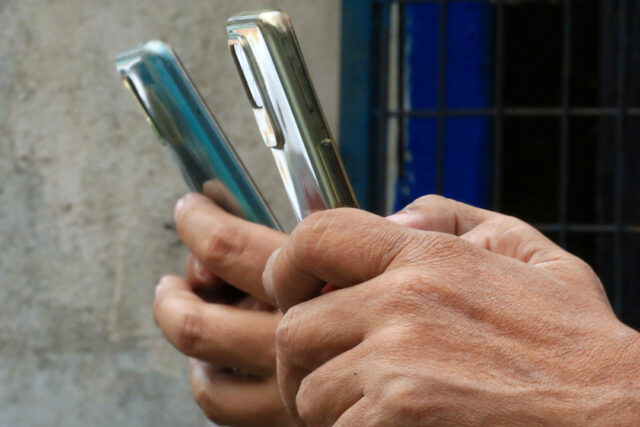By Kyle Aristophere T. Atienza, Reporter
THE PHILIPPINES should not give in to Chinese aggression and should actively secure South China Sea (SCS) areas within its exclusive economic zone (EEZ), political analysts said, after a proposal to publicize the schedule of its resupply missions.
A recent standoff at Second Thomas Shoal, where Chinese forces towed and looted Philippine rubber boats trying to deliver supplies to a Navy outpost there was caused by Beijing’s calculated move and was not a misunderstanding, said Raymond M. Powell, a fellow at Stanford University’s Gordian Knot Center for National Security Innovation.
“Manila should be aware of this and look to avoid falling into the trap in which one side attempts to deescalate while the other exploits the opportunity,” he said in an X message at the weekend.
“One needs only to go back to 2012 and the Scarborough Shoal incident, and remember how this playbook was used before.”
The Chinese Embassy in Manila did not immediately reply to a Viber message seeking comment.
Executive Secretary Lucas P. Bersamin told a news briefing on Friday the National Maritime Council had proposed for the Philippines to announce the schedule of its rotation and resupply missions to avoid tensions.
“We don’t know if the reason for this (recent tension) is there was no prior knowledge on the part of China,” he said. “In the best interest of all parties, I think it’s a wise decision for the President to accept our recommendation to publicize the schedule [of] activities without giving up anything.”
Philippine Coast Guard (PCG) spokesman Jay Tristan Tarriela on Saturday said the council’s proposal had yet to be approved by President Ferdinand R. Marcos, Jr.
Chinese Coast Guard men with bladed weapons on June 17 boarded Philippine rubber boats and looted several rifles, actions that Philippine military chief Romeo S. Brawner, Jr. said only “pirates” do.
China’s Coast Guard also deployed tear gas, “blinding” strobe lights and sirens.
“The Chinese Coast Guard personnel had bladed weapons and our personnel fought with bare hands,” he told a news briefing last week.
A Filipino Navy officer on a rubber boat lost his right thumb when the Chinese Coast Guard rammed it, he said.
Mr. Bersamin has said China’s acts were not a reason to activate Manila’s defense’ treaty with Washington, noting that the encounter was probably a “misunderstanding or accident.”
“We are not yet ready to classify this as an armed attack.”
‘ILLEGAL USE OF FORCE’
Mr. Powell said Beijing does not look at situations such as the June 17 encounter as crises to be deescalated, “but rather as opportunities to be exploited.”
“Manila’s use of words like ‘accident’ or ‘misunderstanding’ will be exploited by Beijing’s active propagandists as ‘evidence’ that Beijing has the high ground,” he said.
He added that the Philippines should consult with the US under their Mutual Defense Treaty to assess “very clear threats to its sovereignty and territorial integrity.”
The PCG last year launched a transparency campaign that seeks to expose China’s aggressive acts within the Philippine EEZ including the use of water cannons and dangerous maneuvers.
“Publicizing the resupply and rotation missions’ schedule is not a way forward for any sovereign state,” Joshua Bernard B. Espeña, vice president at International Development and Security Cooperation, said in a Facebook Messenger chat. “That negates any changes made with the Philippine transparency initiative.”
He said the June 17 encounter was “far from being an accident,” adding that it was similar to the 2020 standoff between Chinese and Indian forces over a border dispute in which China used unconventional weaponry to avoid international attention.
The 1951 Mutual Defense Treaty between the Philippines and US compels both sides to help each other in case of an armed attack.
American officials including President Joseph R. Biden have repeatedly said that an armed attack on Philippine troops, vessels and other assets anywhere in the South China Sea would trigger the defense pact.
“We can expect the Chinese side to be more wieldy in using illegal use of force to test the mettle of Filipino security objectives,” Mr. Espeña said.
He urged the Philippines to speed up its rotation and resupply missions whether through airlifts or patrol boats. These should remain “unscheduled and unannounced.”
“The aim here is to keep the Chinese guessing whether Manila would escalate or use the Mutual Defense Treaty,” he added.
“Remember: Beijing is also anxious about Washington’s ability to build a coalition strike force in the region given how precision strike capabilities and amphibious and air forces are being put into place.”
Michael Henry Ll. Yusingco, a fellow at the Ateneo de Manila University Policy Center, said China uses “dangerous and unprofessional maneuvers because they know we can’t stop them.”
“Military hubris is evident in the way they operate and explain away their incursions in the West Philippine Sea,” he said in an e-mail. “Simply put, they are aggressive and overpowering because they can be.”
“So clashes with our ships and vessels can never ever be characterized as a mere misunderstanding or an accident,” he added.
This should compel the Philippine government to focus all its efforts on establishing a self-reliant defense force, he said.
“The most challenging aspect of this effort is to ensure the funds allocated for our military modernization do not end up in the pockets of corrupt public officials,” Mr. Yusingco said.
Cutting overreliance on the US for external defense is a “long arduous path” that calls for a “whole-of-nation effort,” he added. “The different sectors of civil society should now bring their full attention to what they need to contribute to this effort.”
Philip Arnold P. Tuaño, dean of the Ateneo School of Government, said in an e-mail the international community should realize that it’s in their best interest to push China to deescalate.










